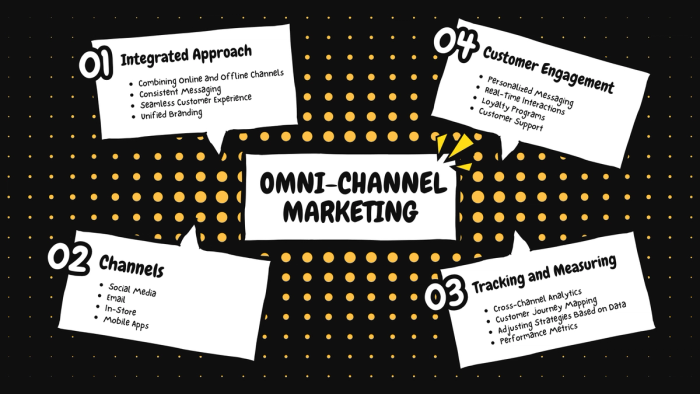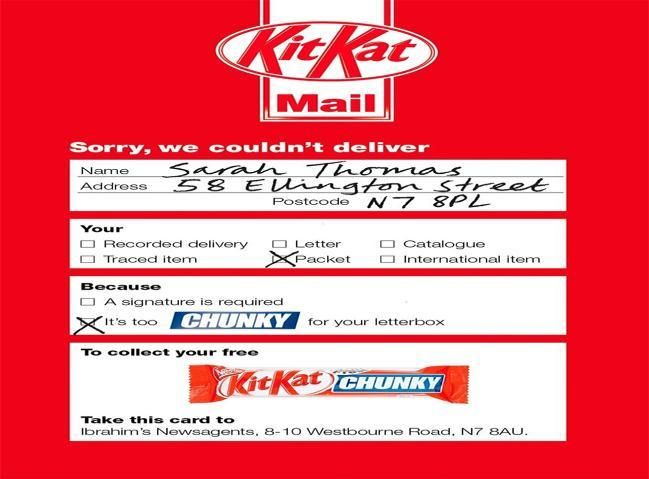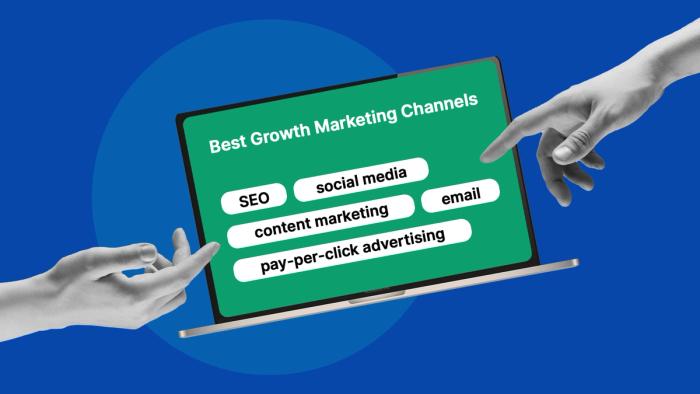Understanding Marketing Channels with Examples
Marketing channels are the methods companies use to deliver products or services to consumers, such as physical stores, websites, and mobile apps.
In a multichannel approach, these channels operate independently; so a promotion in-store might not be available online. Conversely, an omnichannel strategy integrates all channels to provide a seamless customer experience; for example, a customer can browse a product online, purchase it through an app, and pick it up in-store, with consistent interactions across all platforms.
What Are Marketing Channels?
- Direct Selling: Selling products directly to consumers without intermediaries, such as through a company's own website or physical store.
- Retailers and Wholesalers: Third-party sellers who purchase products in bulk (wholesalers) or sell directly to consumers (retailers).
- Digital Marketing Channels: Online platforms like social media, email marketing, search engine optimization (SEO), and content marketing to reach consumers.
- Affiliate Marketing: Partnering with individuals or companies (affiliates) who promote your products in exchange for a commission on sales they generate.
- Telemarketing and Direct Mail: Reaching out to potential customers via phone calls or postal mail to promote products or services.
- Events and Trade Shows: Showcasing products at industry events to attract potential buyers and network with other businesses.
- Mobile Marketing: Engaging customers through mobile devices using apps, SMS messaging, or mobile-optimized websites.
- Franchising and Licensing: Allowing other businesses to sell products under your brand name or use your intellectual property.

In basic communication terminology, we use terms such as sender, message, context, channel, receiver, etc. So, it is not hard to think that marketing uses similar elements since it communicates between products and users. Just with this sentence, we have defined the sender and receiver. The message can vary according to the product or service. But what is a channel in marketing?
If you are looking for a clear marketing channel definition, it is a medium that companies and businesses use to promote their products or services to their target customers.
You can see different forms of marketing channels on social media, printed magazines, billboards, and old-fashioned posters.
With these many options you can choose from, finding the best way to market your product is essential. It is the thing that is going to make you money or save you money as well.
For every $1 spent on email marketing, marketers make $42, which creates a huge gap.
So, get ready to learn about the most fitting marketing channel that fits your brand and your marketing goals.
.png?w=700&fit=max&auto=format)
Through any of these channels, you can reach an audience. However, finding the optimum one that works for both you and your customers is a journey. If we were to define the terms marketing channels, we wouldn’t be able to give a simple example. For instance, if you are trying to reach a younger generation, such as Gen-Z, you can use more social media-oriented marketing; on the other hand, a printed one would be better for older generations.
Types of Marketing Channels Businesses Use
The content can even change according to the types of marketing channels. Thus, looking through the different forms of marketing channels and finding the ideal one for you should be prioritized. So, let’s take a look at the types of marketing channels businesses use.
Direct Channels: Being in direct contact with the audience allows you to communicate with your customers without using any intermediaries. This way, you can be directly in charge of the customer experience, direct data collection, and higher profit margins. With the power of getting in contact first, direct-to-consumer (D2C) sales are projected to grow by 16% in 2024.
Indirect Channels: As opposed to direct, there are also indirect channels where you can use intermediaries such as wholesalers or retailers. Even though you won’t be in charge of every process, you can see this as an advantage as well. By using intermediaries, you don’t have to think about the logistics, the actual selling process or navigating the whole operation. This also might help you to reach a wider audience.
Digital Channels: With television being a part of our living rooms, digital marketing has started to influence our daily lives. Nowadays, digital marketing channels are everywhere, including social media, email marketing, and PPC(pay-per-click).
Physical Channels: These can be considered the old-school marketing channels these days. Traditional channels like brick-to-mortar stores, direct mailing, in-person events, and word-of-mouth marketing are still being used.
Omnichannel Marketing
Marketing channel examples can differ in many ways. If a marketing channel is organized within an integrated structure, from start to end, we call it omnichannel marketing. It can be explained as a seamless customer experience across both online and offline channels. This way, instead of solely creating your marketing strategy over a single channel, you can integrate multiple ones.
For instance, you can use websites, social media, email marketing, in-store sales, and so on. This cross-channel marketing and organization allows your customers to reach out to you easily and fast. Porch Group Media’s research about marketing statistics shows that companies with strong omnichannel strategies retain 89% of their customers on average.

Omnichannel Marketing Example:
Why explain in long sentences? When can we show you examples? Omnichannel marketing uses the consistent experiences of multiple channels and engages with them simultaneously.

Slazenger, which is a sports brand with over 150 years of experience, wanted to enhance its ROI, and it went with personalizing the customer experience. They targeted specific customer segments, such as cart abandoners, through email, web push or on-site notifications. By keeping their potential buyers on the site, they managed to boost their ROI 49 times in only eight weeks.
With Slazenger getting in contact with their potential customers on various channels, they were able to reach a wider audience, which created the base of their success in various levels of marketing mediums.
Direct Channel Marketing: Direct-to-Consumer (D2C)
As we have briefly explained, the direct-to-customer (D2C or DTC) approach is promoting your products or services directly to customers instead of using any intermediary channels. With them having more control over their audience and customers, this eliminates the middleman who acts on behalf of a brand.
Through selling their product or services directly, they take a more proactive approach. Research on personalization statistics shows that 75% of consumers are more likely to shop from retailers who they recognize by name and recommend based on past purchases, which creates word-of-mouth marketing. They can create their own marketing channels examples and they have to attract their customers themselves. In this respect, they are able to adapt to market changes with direct communication and feedback.
Direct Channel Marketing Example:
With direct channel marketing, you can personalize your marketing strategy as creatively as you can. One great example of this is the Chunky KitKat Mail. Even though KitKat’s are not sold from a Nestle store, they wanted to reach their audience on a different level of genuineness.

Nestle sent out cards that said a package couldn’t be delivered due to the KitKat being too chunky. As funny as it sounds, they have also placed an exchangeable fee for a Chunky KitKat card. This way, the customers who love the company felt a more genuine bond with them and bought more than the free KitKat they were given.
Multi-Channel Marketing
Reaching out to your customers through multiple channels will help you reach a wider audience. Hence, getting in contact with them from multi-channel marketing can be beneficial for you. You can use websites, physical stores, subscription boxes, social media or any different types of marketing channels to reach your audience.
This way, you can reach out to a wider audience and increase the brand visibility. Moreover, customers can interact with the brand on their own preferred channels. Research about multi-channel marketing strategies claims that by using this technique, you can have 24% more leads and revenue growth.
Cross-Channel Marketing
We have just explained the advantages of using multiple advertising channels. Cross-channel marketing is really close to multi-channel marketing. However, in this model you can also coordinate all of these multiple channels together and simultaneously.
This way, you can make sure that once you post about something, it goes to every single platform that you are using and reaches every customer possible.
When you plan your marketing on different platforms that will work together, you are also ensuring receivers have consistent content.
Statistics show that cross-channel campaigns can improve purchase rates by 25% over single-channel efforts. So, it is a fact that continuity will eventually build trust between your brand and customers.

Identifying the Right Marketing Channels for Your Business
So far, we have talked about what channel marketing is and different types of marketing channels. Now, it is time to find which model fits your brand the best. Hence, we should think about this process carefully by taking various topics into consideration.
As explained above, you can choose from various advertisement channel strategies such as direct, omnichannel, multi-channel or cross-channel. While deciding which one is the optimum strategy for you, you should try to match your goal, resources and audience persona to the models. So here is a simple list of things you should consider:
- Understand Your Audience: Using customer statistics and drawing an outline of a persona would help you understand your audience. Since you are going to put your content specifically crafted for them, emphasizing their needs will be substantial.
- Set Clear Objectives: A marketing campaign can have multiple goals. These can go from brand awareness, lead generation, sales and like. Therefore, while you are deciding on your channel strategy, finding the most effective one will save you time and effort. You can check on the different forms of marketing channels (such as omnichannel, multi-channel, and direct) and try to meet your expectations with them.
- Analyze Resources and Budget: Budget surprises are the worst. Thus, doing budgeting beforehand can be useful in avoiding any unexpected spending. You can calculate your resources, digital marketing spending, multi-channel investments and such.
- Test and Optimize: Since you are investing your time, effort and money into any marketing strategy, ensuring your selection work is essential. You can use A/B tests to compare results and see the most efficient marketing campaign. Moreover, you can test the optimization for different devices and the marketing visuals.
- Competitor Analysis: Benchmarking has been used in the marketing field for years now. Using market research tools to identify what your competitors are using as channels can show you a lot about your strategy. According to research on omnichannel marketing statistics, 90% of retailers are planning to implement omnichannel strategies within the next two years.
| Definition | Customer Experience | Channel Integration | Goal | |
|---|---|---|---|---|
| Omnichannel Marketing | A seamless and integrated customer experience across all channels. | Consistent and unified across all touchpoints. | High; all channels are integrated and communicate seamlessly. | Provide a unified customer experience across all channels. |
| Multichannel Marketing | Multiple channels are used independently to reach customers. | Varied experiences across channels, as they operate separately. | Low; channels are not integrated and work in silos. | Maximize reach by using multiple channels independently. |
| Direct Channel Marketing | A direct path of communication between the company and the customer (no intermediaries). | Personalized but not necessarily consistent across channels. | None; the focus is on one-to-one communication. | Build a direct relationship and personalized communication with the customer. |
| Cross Channel | Channels are used interchangeably, focusing on linking channels to enhance customer experience. | Linked experience with the ability to move from one channel to another smoothly. | Medium channels are connected but may not be fully integrated. | Enhance customer journey by enabling a smooth transition between channels. |
Most Popular Marketing Channels
After discussing the why-how's of different marketing channels, we can now talk about the most popular ones according to the brand success statistics. Since the technological developments in digital marketing have advanced in recent years, this list is mostly based on digital marketing channels.
- Newsletters: Yes, they still exist. But maybe not in the way you think. Research shows that 31% of digital marketers are using email newsletters as their primary channel to nurture leads. Email newsletters are specifically created to promote new product drops, special offers, or updates. This way, you can navigate your old customers to your brand once again.
- Email Marketing: A great majority, and by that, we mean 81% of small businesses use email as their primary marketing channel. With pre-made templates and the ability to reach out to a wider audience, email marketing is popular. They allow you to personalize any of the content you make, specifically for the recipient. In this respect, you can show your personal interest in working with them.
- Digital Ads (PPC, Display Ads): We live along with digital ads all around us. Sometimes, even on our way to work or just walking down the street. With digital screen advertisements, you are able to reach out to a wider audience. However, keep in mind that since this will not be a targeted audience, you have to carefully design your location and marketing campaign.
- SEO (Search Engine Optimization): In order to be seen in the digital landscape, you have to stand out. Achieving this interaction comes with special optimizations. Search Engine Optimization is the most popular one to follow when you are trying to stand out on simple research. Moreover, it attracts organic traffic to your site, which makes it.
- Social Media Marketing: From the moment you open your phone to check on social media, you can be influenced by any brand. So, using social media channels such as Instagram, Facebook, or LinkedIn can attract a more targeted group defined by algorithms. Also, you can receive feedback and real customer comments on your product through these marketing channels.
| Channel | Cost | Reach | Time to See Results | Targeting Options | Best For |
|---|---|---|---|---|---|
| Social Media Marketing | Low to Medium | Wide | Short to Medium | High | Brand awareness, engagement, audience building |
| Content Marketing | Low to Medium | Wide | Medium to Long | High | Building trust, authority, and long-term engagement |
| Email Marketing | Low | Targeted | Short | High | Lead nurturing, customer retention, personalized communication |
| Search Engine Optimization (SEO) | Low to Medium | Wide | Medium to Long | Medium | Organic visibility, long-term traffic, brand authority |
| Pay-Per-Click (PPC) | Medium to High | Wide | Short | High | Quick visibility, driving traffic and conversions |
| Affiliate Marketing | Low | Targeted | Medium to Long | High | Performance-based partnerships, driving sales |
| Influencer Marketing | Medium | Targeted | Short to Medium | High | Leveraging an audience of trusted personalities, brand exposure |
| Traditional Advertising | High | Wide | Short | Low | Mass reach, brand awareness, local marketing |
Conclusion
The field of marketing relies on different types of marketing channels. Thus, if you want to invest in the advertisement of your products or services, marketing channels are a great choice.
Once you do your research and budget correctly, you can select the ideal marketing channel for yourself. For a direct sale, such as in a physical shop, you can use direct channels. For structured and integrated marketing, you can use omnichannel marketing. If you are looking to match all of your platforms (physical and digital) together, you can use multi-channel marketing. However, if you work with them simultaneously, you can use cross-channel marketing. Defining your main goal, doing careful budgeting and testing your ideal strategy will benefit you in the long run.
We hope you were able to comprehend the types of marketing channels businesses use in all detail. We also encourage you to compare your business model to the requirements of different marketing channels and try to find the optimum one.